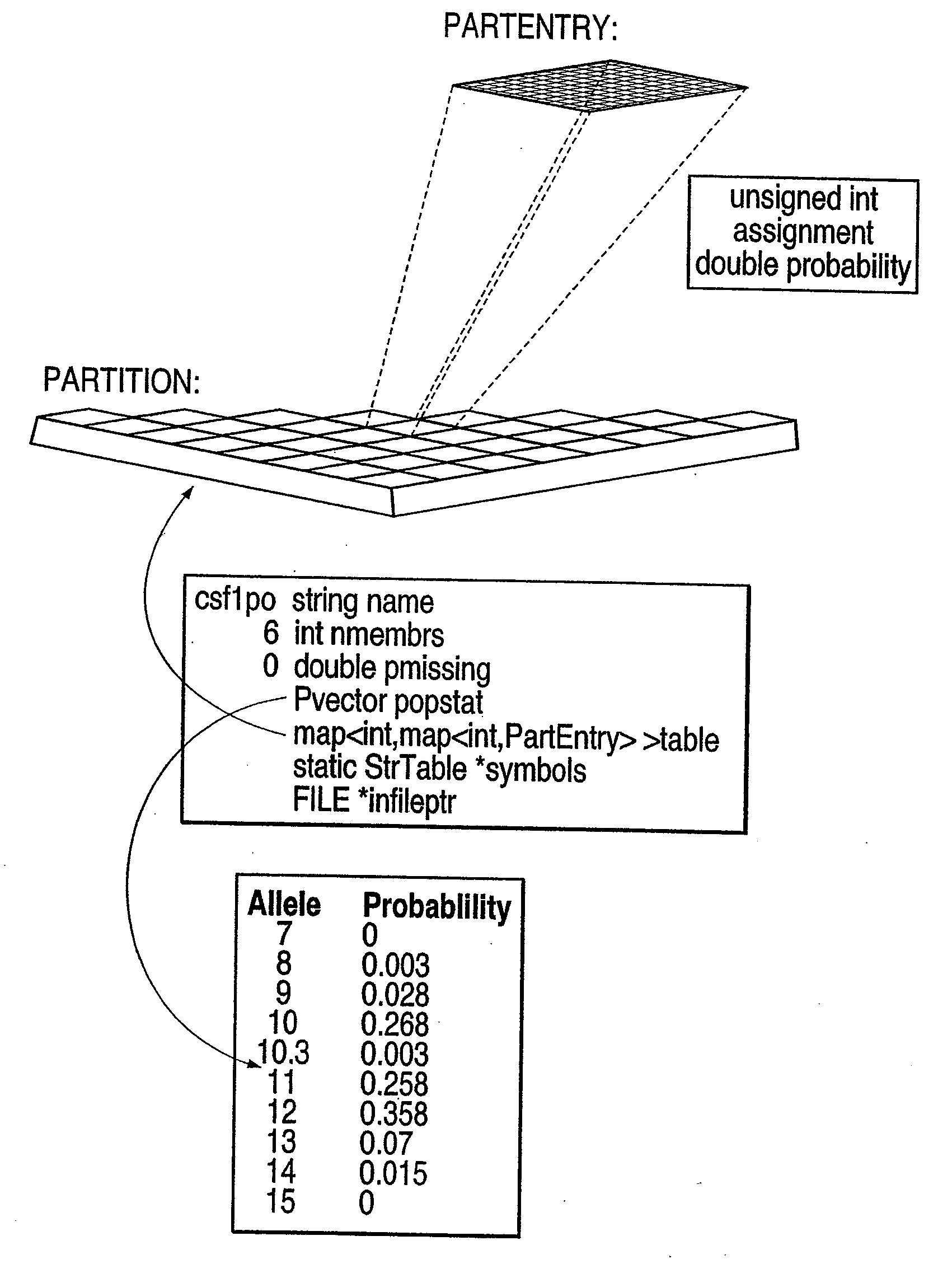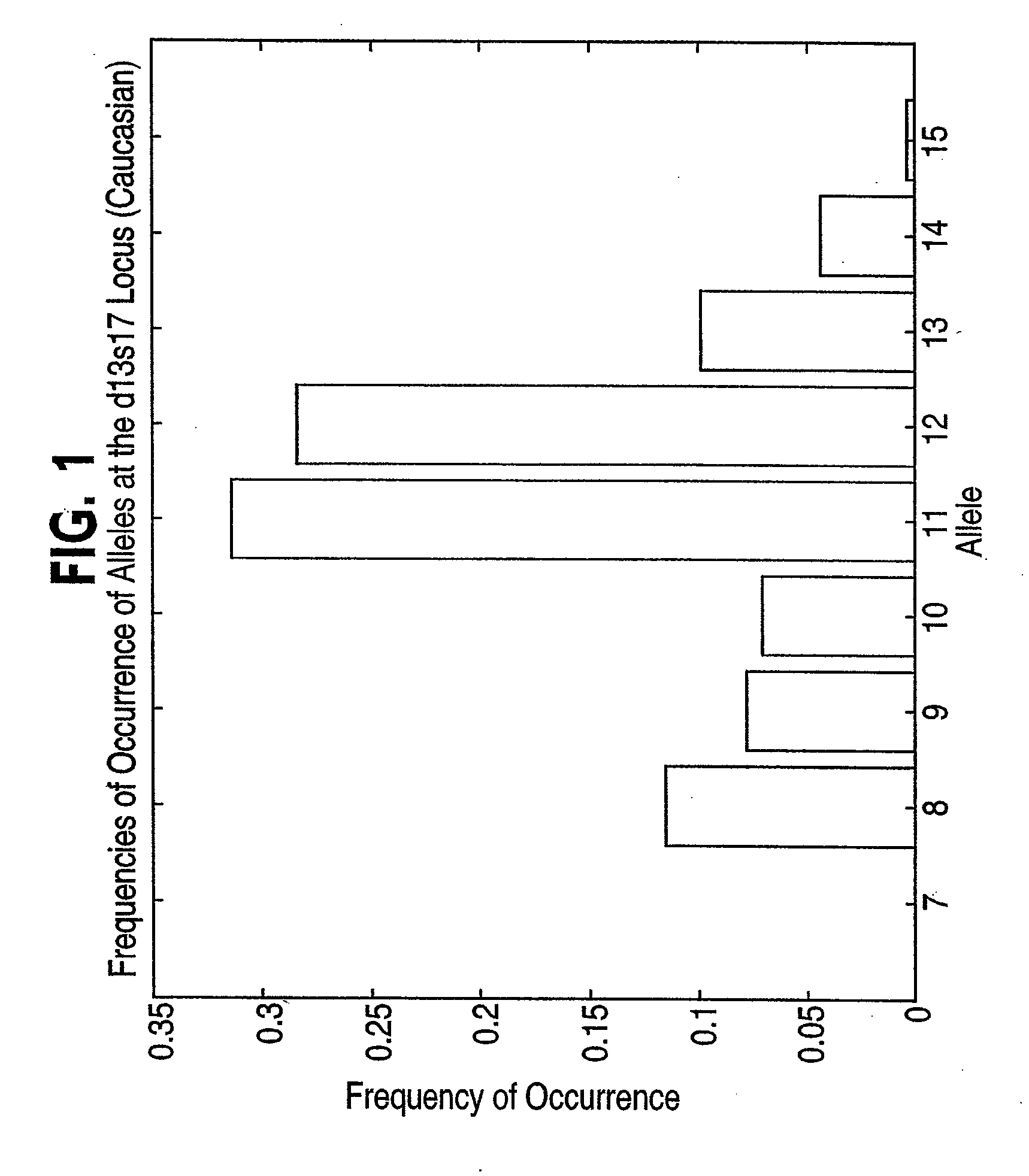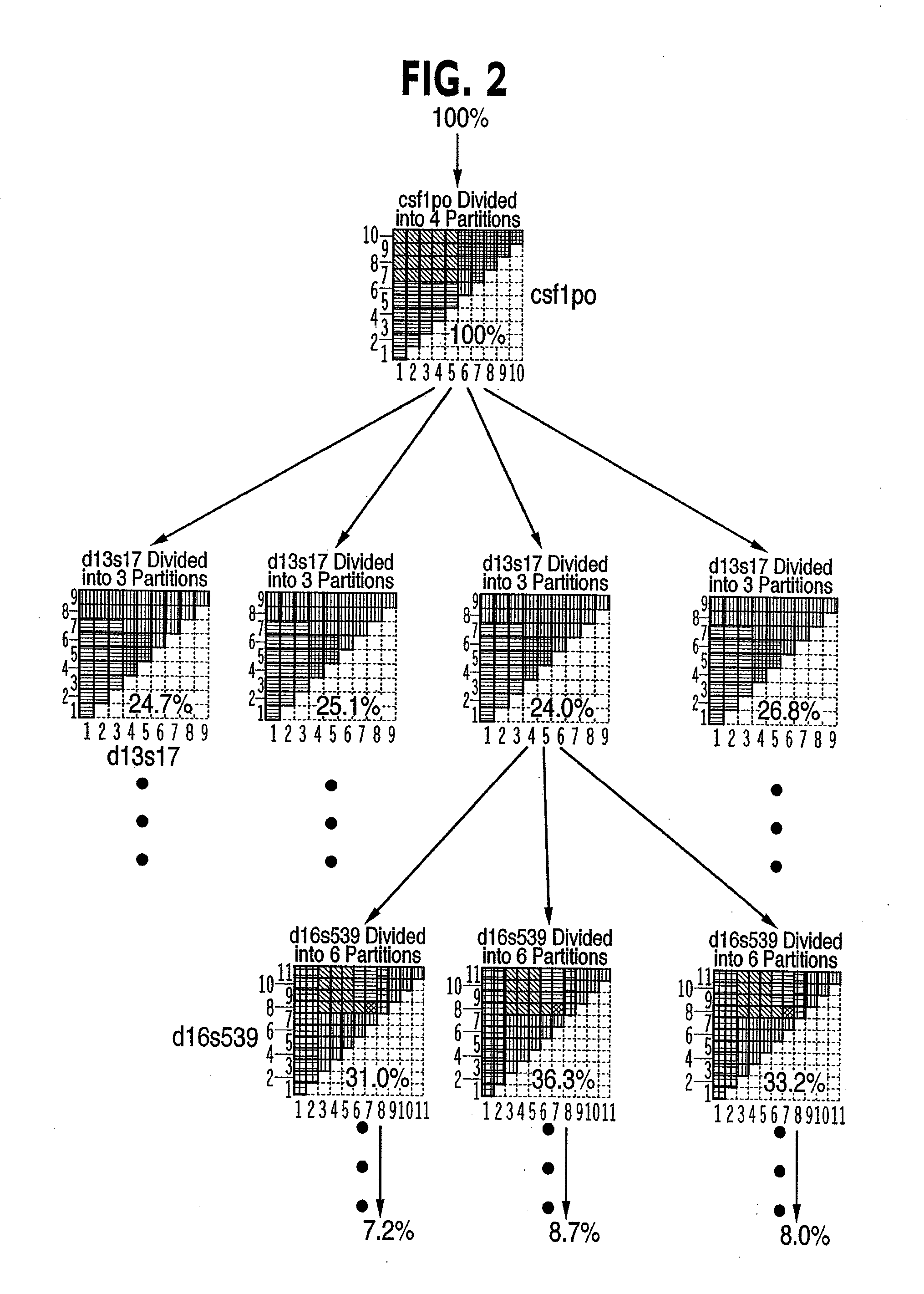Parallel data processing architecture
a data processing and parallel technology, applied in the field of parallel data processing architecture, can solve the problems of standard database indexing structure, time-consuming operation, and inability to take advantage of natural data structure, etc., and achieve the effect of rapid, efficient and novel
- Summary
- Abstract
- Description
- Claims
- Application Information
AI Technical Summary
Benefits of technology
Problems solved by technology
Method used
Image
Examples
example 1
Database Implementation
[0059] A key to implementation of the search specification on a tree-structured database is what occurs at the nodes of the database tree. These nodes can be C++ objects and can contain partition objects used to describe how the database is segmented at each node. Two types of partitioning at the nodes are illustrated: entropy-adjacency partition assignment and data clustering using multivariate statistical analysis. The database is implemented using a Search Queue and one or more Search Engines in each computer host in a single or parallel computer environment. The Search Queue holds Search Requests and additional information such as requests to store or delete DNA profile information in the database. The Search Engines take elements from the Search Queues and perform the requested activities. During this process, additional Search Requests may be generated, which each Search Engine places in the Search Queue. The CODIS search engine communicates with client...
example 2
Entropy-Adjacency Partition Assignment
[0064] To minimize worst-case search time, division of the database into N roughly equal portions at each level of the database tree is highly desirable. A simple and fast test is needed to accomplish this. One test method that can be used to accomplish this is entropy-adjacency partition assignment. This method assigns members of the set of possible allele pairs at a specified locus to groups. The goal is to choose these groups so that their expected sizes are roughly equal, and so that alleles with indices that differ by a small number (corresponding to the number of repeated sequences for STR DNA profiles and the number of base pairs for RFLP DNA profiles) have a high probability of being assigned to the same group. By preferentially assigning alleles differing by a small number of base pairs to the same group, the growth of the number of generated search requests due to a client's specification of equivalent alleles will be less than would ...
example 3
Database Design Using Entropy-Adjacency Partitions
[0071] A schematic representation of the database tree was presented in FIG. 2. In that figure, each node of the tree is represented as being implemented using an entropy-adjacency partition. In practice, this is only one of two methods that may be used at a node, and the tree may contain a mixture of the two cases. The implementation of the tree nodes using entropy-adjacency partitions will be discussed in detail in this section; however, the implementation of the tree nodes can also be accomplished using data clustering.
[0072] A decision tree node can be implemented by a C++ Node object, as shown schematically in FIG. 7. The object can contain a unique identifying integer stored in the thisnode parameter. A Node object may be either a leaf or non-leaf (non-terminal) tree node, as specified by the Node data element isleaf. If it is a leaf, the node can store DNA profile information located at that portion of the tree in a storage ...
PUM
 Login to View More
Login to View More Abstract
Description
Claims
Application Information
 Login to View More
Login to View More - R&D
- Intellectual Property
- Life Sciences
- Materials
- Tech Scout
- Unparalleled Data Quality
- Higher Quality Content
- 60% Fewer Hallucinations
Browse by: Latest US Patents, China's latest patents, Technical Efficacy Thesaurus, Application Domain, Technology Topic, Popular Technical Reports.
© 2025 PatSnap. All rights reserved.Legal|Privacy policy|Modern Slavery Act Transparency Statement|Sitemap|About US| Contact US: help@patsnap.com



